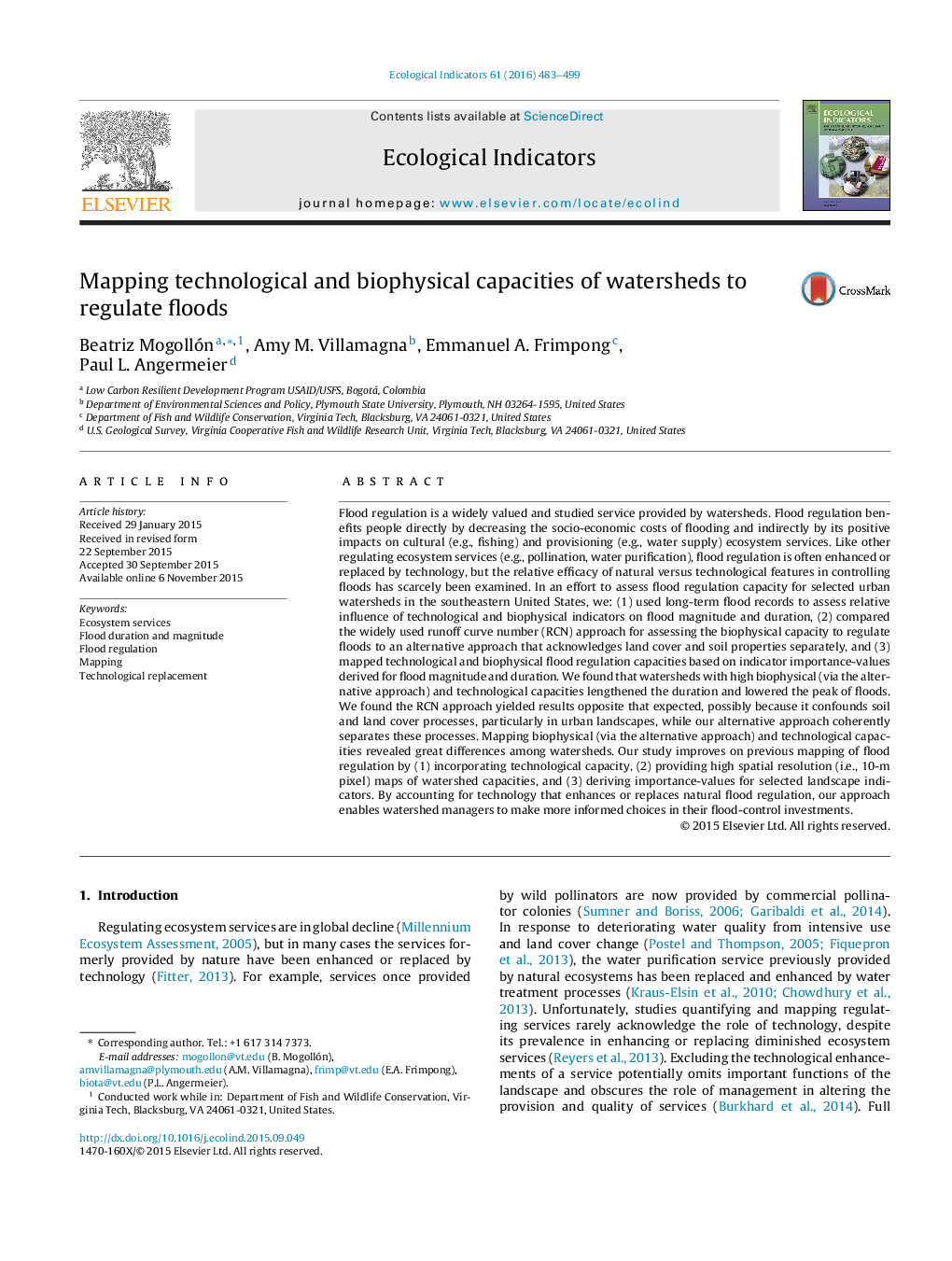| Article ID | Journal | Published Year | Pages | File Type |
|---|---|---|---|---|
| 6293640 | Ecological Indicators | 2016 | 17 Pages |
Abstract
Flood regulation is a widely valued and studied service provided by watersheds. Flood regulation benefits people directly by decreasing the socio-economic costs of flooding and indirectly by its positive impacts on cultural (e.g., fishing) and provisioning (e.g., water supply) ecosystem services. Like other regulating ecosystem services (e.g., pollination, water purification), flood regulation is often enhanced or replaced by technology, but the relative efficacy of natural versus technological features in controlling floods has scarcely been examined. In an effort to assess flood regulation capacity for selected urban watersheds in the southeastern United States, we: (1) used long-term flood records to assess relative influence of technological and biophysical indicators on flood magnitude and duration, (2) compared the widely used runoff curve number (RCN) approach for assessing the biophysical capacity to regulate floods to an alternative approach that acknowledges land cover and soil properties separately, and (3) mapped technological and biophysical flood regulation capacities based on indicator importance-values derived for flood magnitude and duration. We found that watersheds with high biophysical (via the alternative approach) and technological capacities lengthened the duration and lowered the peak of floods. We found the RCN approach yielded results opposite that expected, possibly because it confounds soil and land cover processes, particularly in urban landscapes, while our alternative approach coherently separates these processes. Mapping biophysical (via the alternative approach) and technological capacities revealed great differences among watersheds. Our study improves on previous mapping of flood regulation by (1) incorporating technological capacity, (2) providing high spatial resolution (i.e., 10-m pixel) maps of watershed capacities, and (3) deriving importance-values for selected landscape indicators. By accounting for technology that enhances or replaces natural flood regulation, our approach enables watershed managers to make more informed choices in their flood-control investments.
Related Topics
Life Sciences
Agricultural and Biological Sciences
Ecology, Evolution, Behavior and Systematics
Authors
Beatriz Mogollón, Amy M. Villamagna, Emmanuel A. Frimpong, Paul L. Angermeier,
